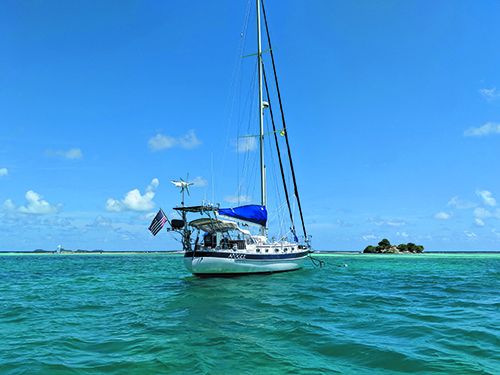Caution Aloft
Regarding your recent “PS Advisor” on going aloft (see PS July 2020, “Simple Tricks on Going Aloft”), I don’t go aloft without a “marriage saver” headset. A reassuring quiet conversation is much safer and more efficient than shouting into the wind, but maybe not quite as entertaining to the neighbors.
Our headsets are Sena SPH10s, probably seven years old but still working. We are originally lake sailors from Nashville, TN, who have been able to live our dream of living aboard for five years. Our boat is Apogee, a 1997 Valiant 42, which has taken great care of us. We have put 1,500 miles under our keel on the east coast, the Bahamas, and two years in the Caribbean. We sailed from the US Virgin Islands to Annapolis in May of this year.
Lee Coulter
Apogee, Valiant 42
Nashville, TN
(Currently in Annapolis, MD)
We have tested communication headsets in the past. Although some newer models have replaced the ones we tested, in many cases the changes are cosmetic. Our previous recommendations (see PS May 2009) should still help provide guidance on which are the leading brands, and what specific features are valuable to sailors.
Proud Owner of Irwin 37
Regarding your review of the “mediocre” Irwin 37, I’ve got an Irwin 37 center cockpit ketch (1974). I bought it from a consignment yard in terrible shape. None of my stanchions are rail mounted, and my cockpit accommodates six adults easily. I have made modifications. I have moved my chainplates outboard, as you see on Pacific Seacrafts.
My sail locker was already partitioned in two parts. The lazarette? I like as it is. A man could make his home there.
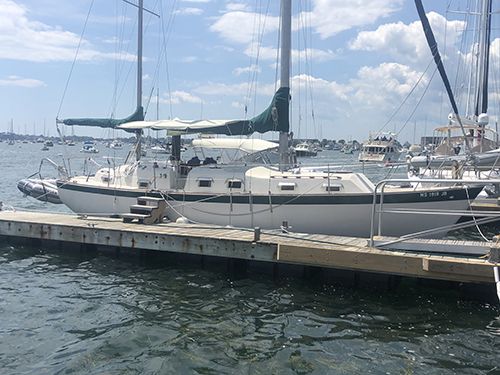
The previous owner sailed her every year for nine years from Maine to the Bahamas and back. I’ve got the customs stamps to prove that. I’m in Newport RI, and the furthest I’ve ever gone is to Yarmouth, Nova Scotia.
It was a slow trek to be sure, but very comfortable. I’ve got a 100 gallon diesel tank, giving me 600 nautical miles range under power at about 6.5 knots.
She ain’t no Shannon. She’s old and slow, and won’t point worth a nickel, but my wife, son, daughter and cat love her. I told her you called her “mediocre.” It hurt her feelings, but she’ll get over it by tomorrow’s sail.
One modification I made was to extend the rudder. I found that when under sail, and doing less than three knots, Aja was very late in responding to the helm. I added 14 inches to the trailing edge of the rudder, but found that was taxing on the steering mechanism, so I cut off about 6 inches, leaving 8 inches. This seems to be working very well.
Dave Bianchi
Aja, Irwin 37
Newport, RI
It’s getting to be that time of year, when many skippers haul out or head south. Fall also heralds the beginning of boat show season. Here are some PS articles from the online archives that will help you weather the changing of the seasons.
Winterizing
If temperatures in your neck of the woods require buttoning up for the winter, be sure to check out our 2014 articles on choosing the best antifreeze: PS November 2014 and September 2014. The September 2014 antifreeze test report also includes helpful, step-by-step tips on winterizing onboard systems. Protect your boat and sails from mildew during winter haulout with the prevention tips in our May 17, 2017 blog post. Also, if you’re in the market for a winter boat cover, find out what to look for in a pre-made cover in the March 2013 blog post and get details on custom covers in the November 2012 PS Advisor. Do-it-yourselfers will want to read the Nov. 2, 2016 post on building your own winter cover and frame.
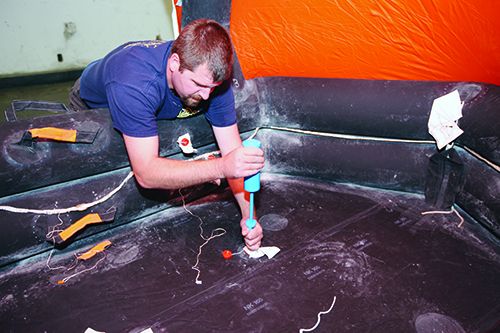
Heading Offshore
This is a good time for those lucky crews sailing south for the winter to have their life rafts inspected; you’ll find our report on raft inspections in the February 2013 issue. If you’re heading offshore and want to invest in some new foulies for the voyage, check out our top picks in the February 2015 (men’s kits) and March 2015 (women’s gear) issues.
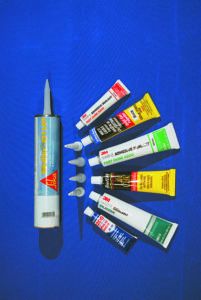
Maintenance Chores
Winter’s freeze and thaw cycles can wreak havoc on a cored hull. Before the temps start dropping, take a look at our August 2010 test of marine adhesives and get busy with those sealing and re-bedding projects. Whether you’re putting the boat away in the off-season or venturing offshore, your electrical connections need protection; we tested anti-corrosion sprays in the September 2007 issue and greases in the April 2017 issue.
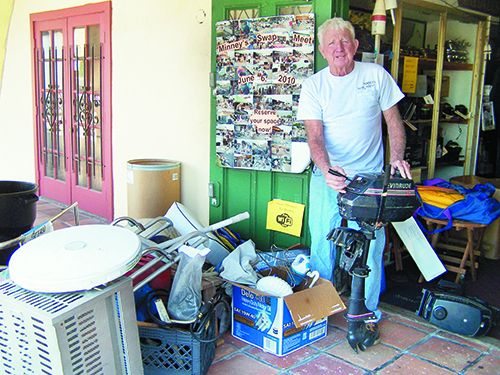
Before You Go
Boat show season is underway. But before you tap into your cruising kitty for shiny new gear, consider stopping by a used-gear chandlery; we profiled some good ones in the February 2011 issue and offered a rundown on which marine gear is safe to buy used. For show newbies, check out our boat show survival guide in the September 2014 blog post. Our recent roundup of our Editor’s Choice gear picks (PS September 2017) should also help as you browse the glitzy boat show aisles and docks.

Topside Paint Update
I received your recent e-blast on topside finishes and was hoping it would include Alexseal, but it did not. I was first referred to Alexseal by Marc Kahan at Fairview Marina in Pasadena, MD. He does high-end paint work and I respect his advice. I was looking for something that could be applied without spraying, had a long lifespan, and that was repairable. I am under no illusion that I can paint without any runs or some bug getting into it, and I wanted to be able to fix my goofs.
Alexseal and Quantum 99 were the only ones I found that met all three criteria. I follow Andy Miller on Boatworks Today on YouTube and Andy shared the techniques that he learned using Alexseal, including using flocked foam rollers without having to follow by tipping-off with a brush. That hasn’t come out on his YouTube channel, yet but it will eventually.
I tried it out myself while painting a large boom in gloss black and a number of piece parts in white. I found that if I roll on the finish with a flocked foam roller, then immediately do a very light second pass, the bubbles will break, but there won’t be any residual brush strokes.
Using this technique, I found that I can do a “roll-and-roll” paint project by myself, without a helper following to tip off, or the delay of switching tools while the solvents flash off. The adjacent photo is a close-up of the end of a 6-inch diameter boom that I painted in gloss black with a roller.
Like any LPU paint, the reducer ratio and application conditions are critical to balancing surface finish versus runs. I found Alexseal to be much more forgiving than Awlgrip in that regard. As long as I can catch it while the reducer is still present, I can dab it on in the nooks and crannies with a brush, and it still flows out without brush strokes.
Not all is perfect, however. The flocked foam rollers from Padco and Whizz both tended to shed flocking into the finish. However, if it bugs me I can just buff it out. I haven’t tried that yet.
Andy Miller has been using Redtree brand mohair mini-rollers with good results. I got some from a different vendor, but found it left a bit more stipple than the flocked foam. (I was also in a hurry and in hot conditions on a vertical surface).
Next, I will be trying Redtree rollers and see if that comes out any better. At this point for my old boat, I’m embracing a less-than-mirror finish so that it hides the fact that I didn’t fair the hull with a longboard. The boat’s original name was Scratch which was appropriate for the damage she sustained at a floating dock on Lake Pontchartrain during Hurricane Katrina.
Another bit of advice that I received was that Alexseals 442 primer takes a long time to harden, and is tough to sand for that reason. I have been using TotalBoat “Total Fair” epoxy surfacing primer instead, and getting good results so far. I assume that Awlgrip 545 would work fine too.
Jim Kneale
Dream Catcher, Islander 37
Severna Park, MD
Thanks for sharing. We’ve also had good results with Redtree foam rollers when working with two-part products. See “DIY Topside Paint Test: Two-part Linear Polyurethanes Face Off” for our experience rolling and tipping with Epiphanes and Interlux Perfection. We’ve also carried out extensive tests of topside paints, fairing compounds, and application techniques. These can be found online by searching under the relevant topic.
Cruisers and contagions
The topic of Darrell Nicholson’s recent editorial and blog post (“International Cruising During Covid-19”) coupled with the romance for sailing to distant isles takes me back to the book Fatu Hiva – Back To Nature,” written by archeologist and explorer, Thor Heyerdahl of Kon-Tiki fame.

Thor’s account is based upon a year of research and experiences in 1937 when as newlyweds, he and his wife Liv came to live among the natives of Fatu Hiva, a remote island of the Marquesas group. The motive for their travel was a honeymoon coupled with Thor’s objective to look for evidence of a diaspora of seafarers from the South American mainland.
After arrival from Scandinavia at a busy trading port in the Marquesas group, they picked up a Pacific island trading steamer bound for Fatu Hiva. Upon arrival on the island, a cabin boy aboard the steamer was suffering from a high fever. While the ship transferred cargo, he debarked for several hours to rest in the shade and replenish with coconut water before leaving with the rest of the crew.
By the end of a week, native people of the island were prostrate and dying from the onset of high fevers and coughs. Thor and Liv began to realize that they had walked into one of the final devastating waves of a protracted flu epidemic that, via contact from infected people on trading vessels, was wiping out nearly all the inhabitants on the leeward coastal area of this beautiful island.
It need not have been the same devastating strain of the 1918 flu pandemic (essentially the N1H1 flu strain), but that would have mattered little to those without any resistance to the common flu who were nearing their last breath. This is what herd immunity looks like when a virus is thrust upon a people without prior active immunity to the virus.
Given the fact that a major percentage of the world’s human population still have no prior immune experience with the SARS-Co-V2 virus causing the current Covid-19 pandemic, it requires little imagination to empathize with modern islanders armed with current epidemiological knowledge, and to recognize the sense of danger they feel when a foreign boat shows up on their horizon.
The brighter side of that otherwise terrible experience of the flu epidemic in Fatu Hiva is that due to the steep hillsides and deep ravines of the volcanic island, other islanders who had previously settled in the upper highland areas were isolated enough to benefit from the physical separation. Without the benefit of any scientific medical knowledge, this separation afforded them enough time to agree to isolate themselves from their normal social interactions of trade and marriage with the lowland dwellers.
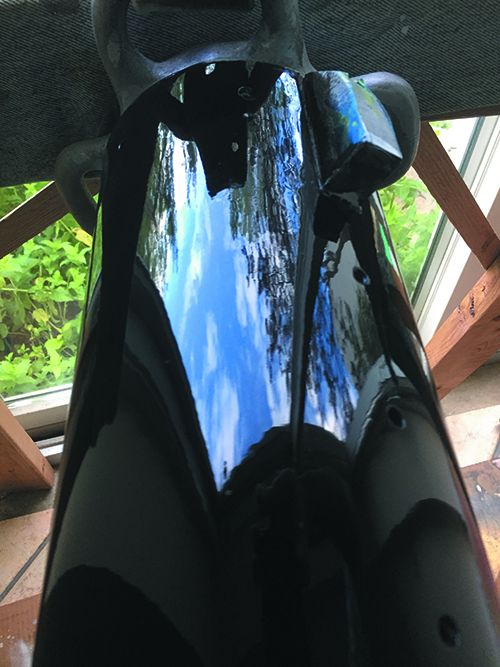
As a primary care physician I attended the CDC annual “Global Infectious Disease Conference” in Atlanta in January 2002. The conference coincided with the H1N1 epidemic. At the time, it seemed clear to us at the conference that the planet was on the brink of pandemic. However, through international cooperation for containment of the virus via shared viral genome identification, preventive control procedures, and cooperative agreements to add H1N1 proteins into the flu vaccine, we avoided this outcome.
All of this was done in parallel with aid and support from the World Health Organization. The conference was a chance to hear medical experts describe the genome composition of the H1N1 human flu. We were also able to witness a synopsis of the Center for Disease Control’s latest computer-modeled predictions for the consequences of H1N1 herd immunity in the absence of a vaccine. This was presented as a timeline beginning with one sentinel H1N1 case, that of an infected person coughing in an international airport.
We were presented with point in time delays in the recognition of symptomatic carriers of the disease, delays in adequate testing to identify non-symptomatic carriers, and delays in the quarantine of carriers together with delays in isolation of contacts. It was in some ways, a replay of 1918, only with the aid of air transport of H1N1 virus hosts around the planet at 600 miles per hour.
In retrospect, the CDC modeling was like our experience in the U.S. since January and up to the present. The point of no return in the H1N1 prediction models was the time after which quarantine and isolation ultimately could no longer prevent critical loss of basic infrastructure of business resources and the public agencies of most countries on the planet. A predicted worst case scenario showed a loss of about 1/3 of the world’s population.
Time is not on our side. If we intend to find the freedom to reach distant shores and enjoy cultural international exchanges in idyllic anchorages, we would do well to get our hands back on a rudder to push for improvement in government policy and restore funding and autonomy of our epidemiologic resources — without further delay!
Steve Gross
Spirit Quest, Tayana 37 PH Cutter
Blaine, WA
Thank you for sharing. To disseminate new research on Covid-19, our publisher, Belvoir Media Group, has teamed Harvard Medical School to create the Harvard Coronavirus Resource Center, www.health.harvard.edu/diseases-and-conditions/coronavirus-resource-center.
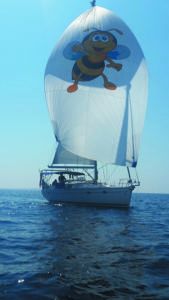
Say No To Butt Splices
Regarding your report “Heat Seal Connectors,” (see PS January 2019), I am a former marine engine tech, and in my experience, no knowledgable marine tech is going to butt-joint a wire. A Western Union or a T-splice would be used, then soldered, covered with electrical conducting grease and then shrink tubes. I also finish off with a color-correct covering of electrical tape All wires should be supported with vibration in mind. I use a micro butane torch and flux cores silver solder. I will put that joint up against any fastener!
Rob Legate
Mainship MK1 and Shark 24,
Belleville, Ontario, CA
We are a big fan of splices, too and have done several reports on the topic of splices (see “Small Wire Connections Part II,” PS December 2016). Vibration, as you point out, is a key enemy of splices.
Corrosion Reference Book
With regards to your recent report “Marine Metal Warning,” you should know there is a book on the choice of metals to be used and it covers more than just corrosion: “Metals In Boats” by Vyv Cox. In my view, it is worth getting a copy.
You can look up other testing he has done on chain, C-link connectors, and other items at www.coxeng.co.uk. The C-links that Vyv mentions being the best are the Crosby C-links, from the U.S. Before adding them to the chain, I give them several coats of zinc spray. I also spray four adjacent chain links on each side of the connection. Otherwise, I find that the links close to the C-link sacrificially protect the C-link, so that one ends up with a few rusty links each side of the C-link.
Andrew Geddes
Genial Bee, 2004 Jeanneau 43DS
Weymouth, UK
Thanks! Our testers are aware of Mr. Cox’s work, and we’ll add “Metals in Boats,” to our office shelves. A couple of other resources we have used include “The Boatowner’s Guide to Corrosion,” by Everett Collier; “Metal Corrosion in Boats,” by Nigel Warren; and for entertainment, we enjoyed Jonathan Waldman’s deep-dive into the history of corrosion “Rust, the Longest War.” Our PS Advisor column (see “Reliable Chain Connectors,” PS June 2018) presented an overview of chain connectors like the Crosby C-link.
Practical Sailor welcomes reader comments and questions. Send email & reader photography (digital .jpg 1MB or greater) to [email protected]; include your name, homeport, boat type, and boat name. Send any broken gear samples to Practical Sailor, 1600 Bayshore Rd., Nokomis, FL 34275


































